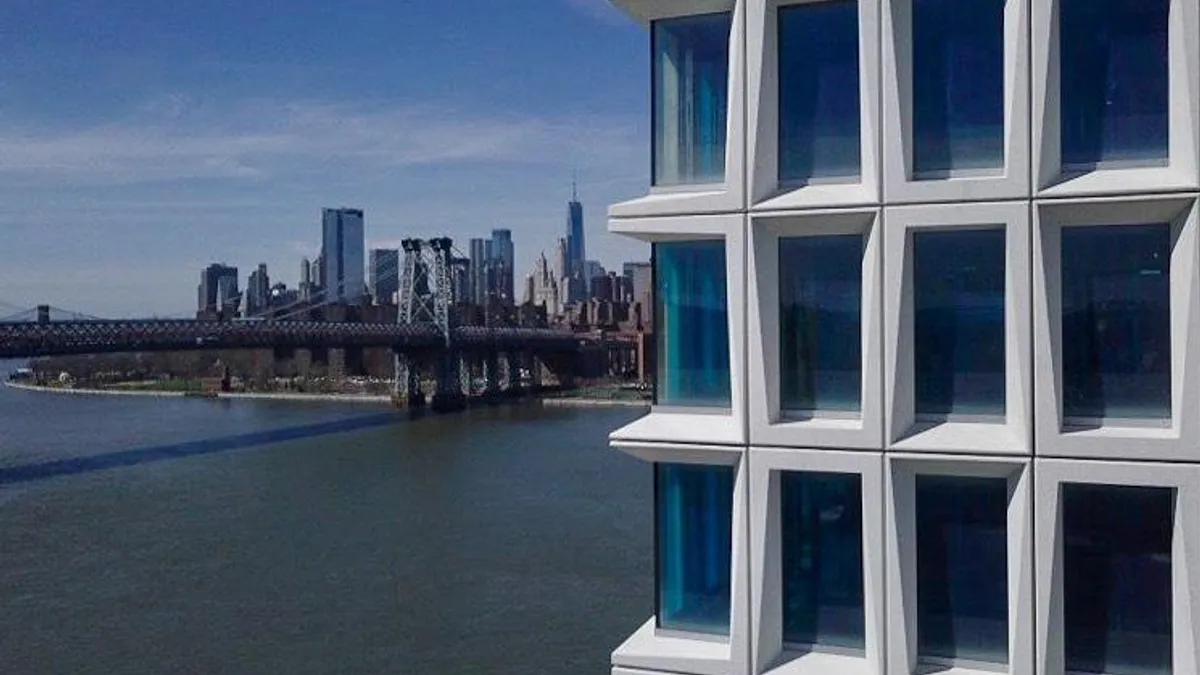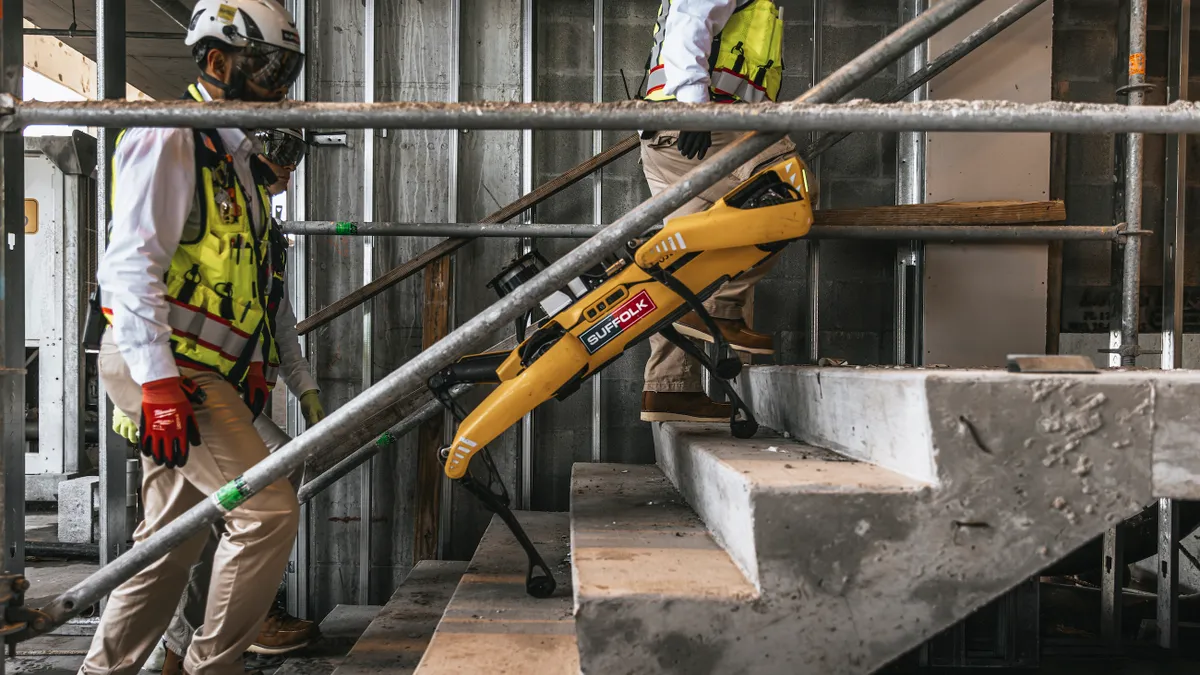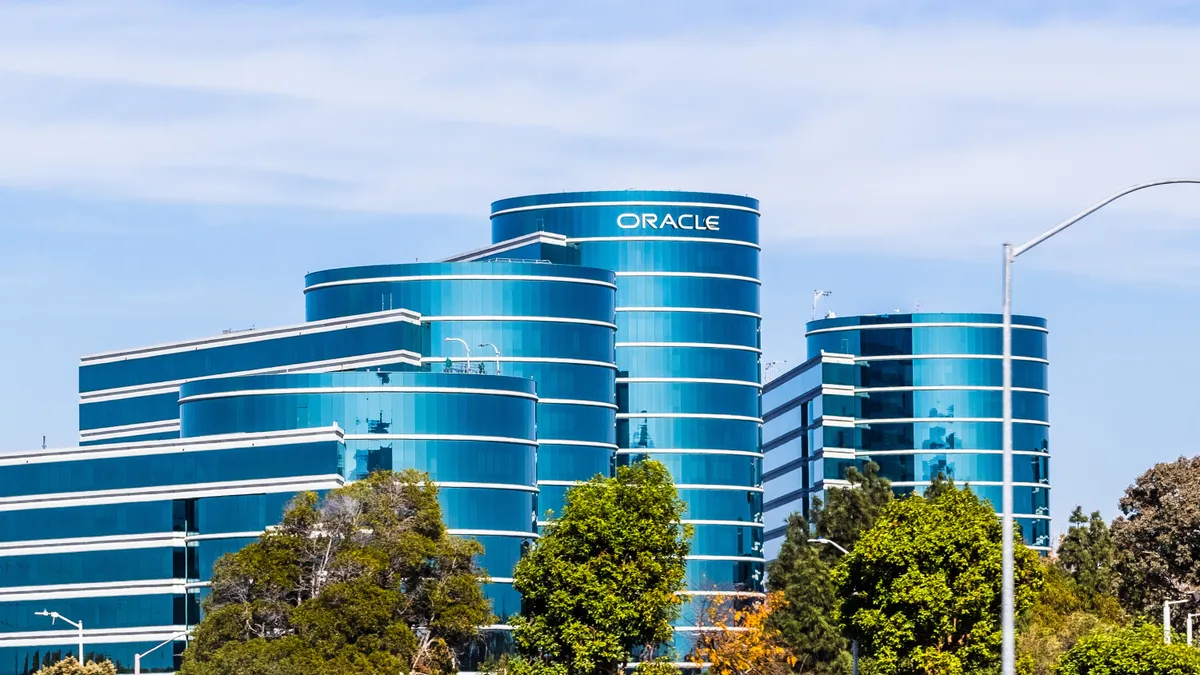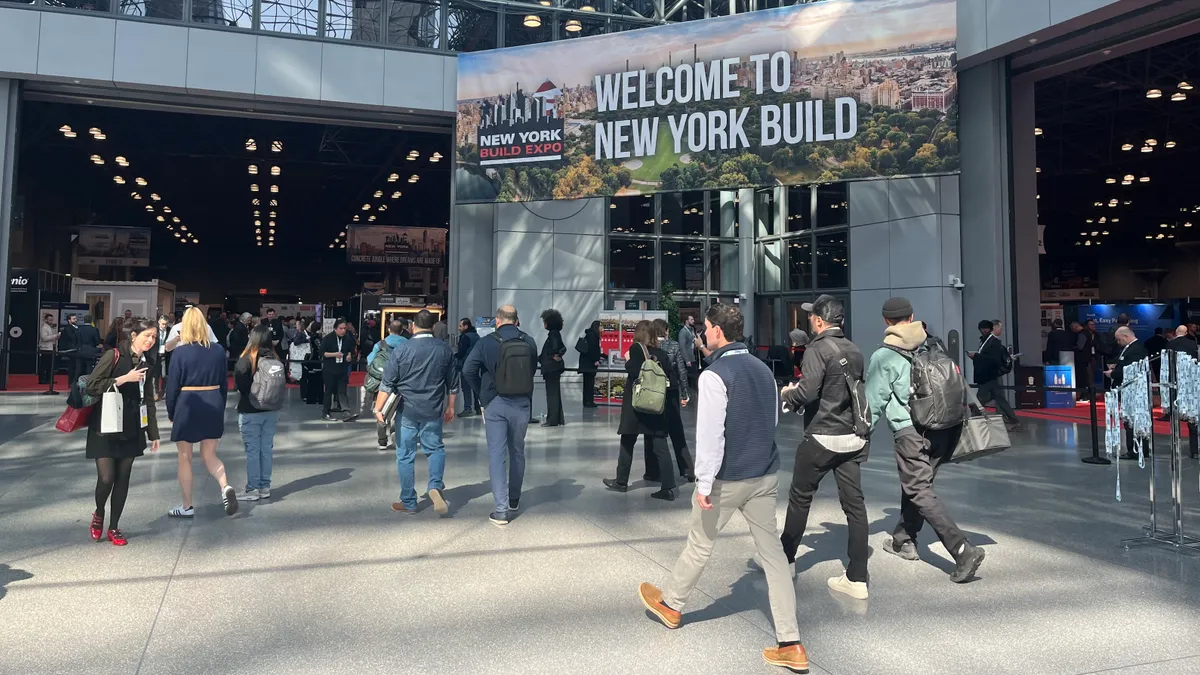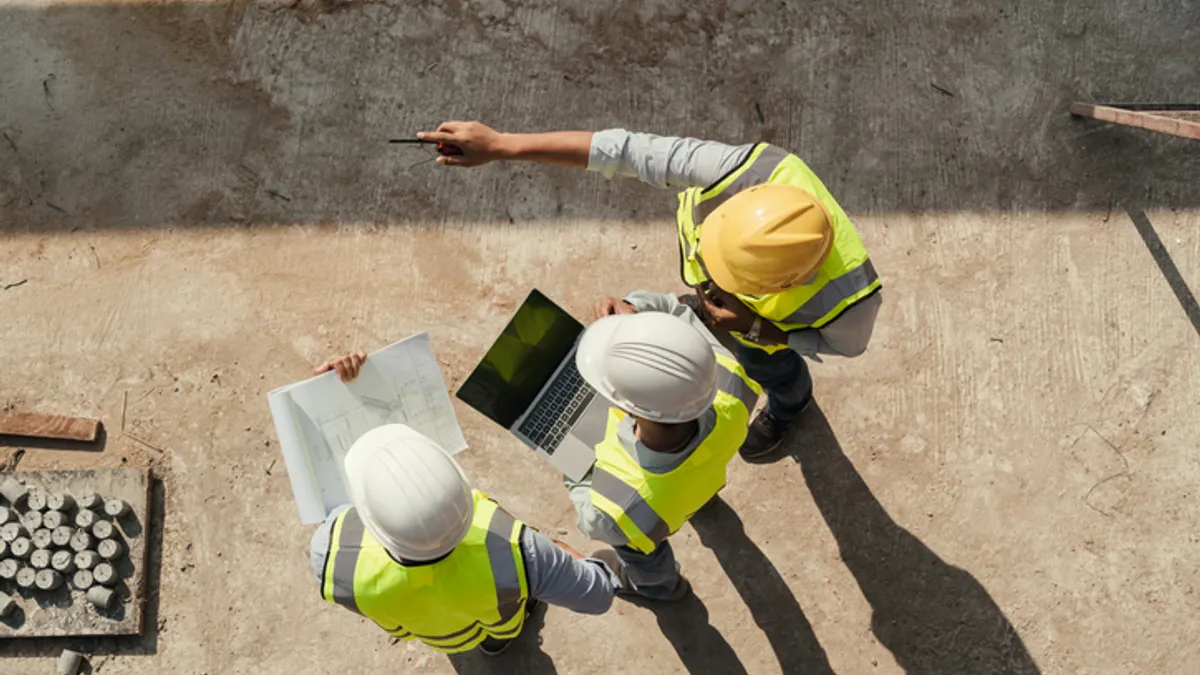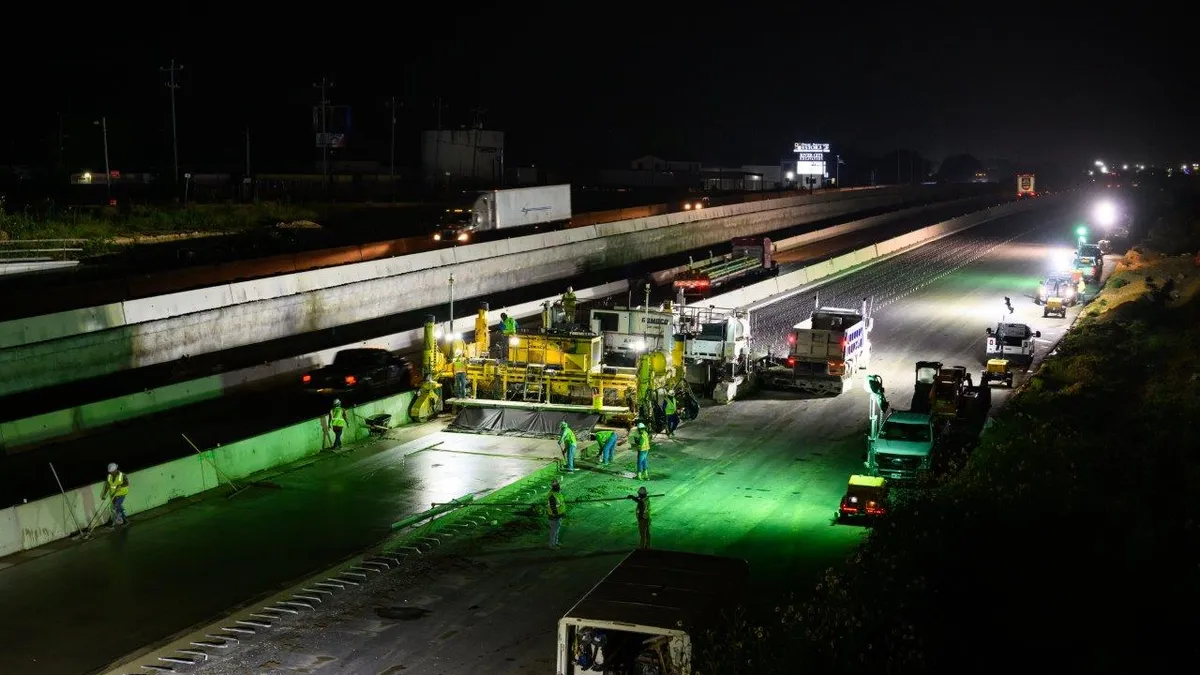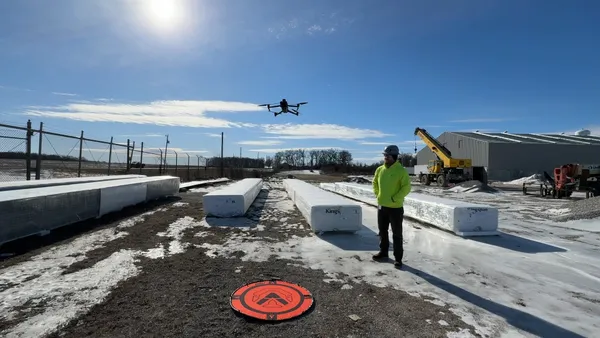It would be a shame to redevelop the Domino Sugar refinery property in Brooklyn without giving a nod to the historic building's past. Installing concrete panels on the exterior of the 42-story tower achieved that, but manufacturing those panels from 3D-printed molds also provided a glimpse of the future. The under-development high-rise known as One South First is the first in the U.S. to incorporate concrete cast from 3D-printed molds.
Both the materials and the method can confer significant benefits over traditional time- and labor-intensive wood molds, its proponents say, yet the applicability has its limitations.
3D-printed molds for precast concrete used on the exterior of One South First
A collaborative challenge
The idea of utilizing 3D-printed molds for precast concrete exterior panels was born from a collaboration between the Oak Ridge National Laboratories (ORNL) and the Precast/Prestressed Concrete Institute. After working together on ways to improve the thermal efficiency of buildings through lightweight insulated precast panels, researchers from ORNL saw the potential for introducing 3D printing. Steve Brock, senior vice president of engineering at Gate Precast Co. and member of the PCI advisory team for the ORNL project, agreed, and used 3D-printed molds to cast about 30 samples of a 1-foot cornice piece for a client.
Just 10 days after completing this relatively low-risk trial, ORNL asked Gate Precast to go bigger: utilize Big Area Additive Manufacturing (BAAM) to produce molds for casting One South First’s 1,594 window panels, which measure up to 12 feet, 4 inches in height and 19 feet, 11 inches in length.
Although wood molds for the mock-up were already built, Gate Precast accepted the challenge for a good portion of the balance of the project and presented the concept to the building's designer, CookFox Architects. ORNL developed the initial molds, then brought on Additive Engineering Solutions (AES) in Akron, Ohio, to help with production.
Efficient and economical
For this project, additive manufacturing delivered savings of both time and money. The panels CookFox designed feature varying profiles that “conceptually relate back to sugar crystals and the site’s history while providing self-shading throughout the day," according to Arno Adkins, project architect for the New York-based firm. Those variations required more than 100 different molds, and each mold would have taken master carpenters — who are in short supply in the industry — 40 to 50 hours to produce in wood.
“We would’ve tied up carpenters in multiple plants for months,” Mo Wright, marketing director for Gate Precast, told Construction Dive.
3D printing and machining the molds, however, took just 14 to 16 hours each.
Economies of scale also made 3D printing more affordable than wood. The total cost for each 3D-printed mold, including the material, programming, numerical control machining and sanding, was $9,000. That’s compared to $1,800 for a wood and fiberglass mold.
Yet, “[When it comes to durability, 3D-printed molds have a vastly longer life than wood and fiberglass,” explained Austin Schmidt, president of AES. The acrylonitrile butadiene styrene (ABS) thermoplastic used in the molds was reinforced with carbon fibers — making the molds much more resilient. While a wood and fiberglass mold could only have been reused 10 times, each ABS mold maintained its integrity with no loss of quality for 203 uses. That yields a cost-per-pour of $44.33 for the ABS molds, compared to $180 for wood.
The question of quality
In addition to these efficiencies, 3D printing delivered a higher-quality end product. Additive manufacturing achieves tighter tolerances than a traditional wood form — as good as 0.050-inch and lower. And the rigidity of the material “allows for better vibration to consolidate the concrete, thus leaving minimal bugholes in the finished concrete and requiring less repair work,” according to a 2018 PCI Journal article.
In terms of aesthetics, the 3D-printed forms produced panels that were noticeably crisper than Adkins has seen cast from wood — which was important given the panels’ faceted angles. “The edges, the transitions are all a little sharper,” he said.
While wood was able to deliver the angles required for this design, 3D printing also allows designers to produce more complex and curved shapes without joint or seam lines.
Improvement is imminent
Although there was little time during the rushed one-month design phase to look for efficiencies, Gate Precast, ORNL and AES are reviewing the project and already have identified numerous opportunities. AES was able to cut about 50 pounds from some of the molds, saving on materials and printing time. They also could have used a less expensive material than the 20 percent carbon-fiber ABS.
“The forms were overbuilt, but we had to [use them] because there was too much risk involved,” Wright said. “When it shifted from an idea to a job, it was no longer a research project.”
As the process is optimized and the price of the $1 million to $2 million large-format printers begins to decline, those involved in the project expect costs for precast manufacturers to decrease as well, encouraging more to try out the technology.
While One South First’s panels remain the largest project AES has handled in terms of total printing, the company has now produced molds for three precast concrete manufacturers, including Wells Concrete in Albany, Minnesota. The 30 forms for architectural precast panels were used in the renovation and expansion of a residence hall at the University of Minnesota.
Limitations to learn from
Despite the benefits additive manufacturing offers the precast concrete industry, it’s not the most efficient approach for every project. To offset the high cost of the polymer materials, 3D-printed molds should be reused hundreds of times, which rules them out for many smaller projects. Forms that are simple, long, square and flat likewise aren’t worth the increased cost.
“The greater the x, y, z dimension is of the part, the better,” Schmidt said. “In general, our molds are better for thicker precast parts than thinner precast parts.”
So while 3D printing brings new possibilities for precast concrete, it likely will never replace traditional wood or fiberglass molds. “It’s another tool for the manufacturer to use," Adkins said, "but it’s not the only one."


